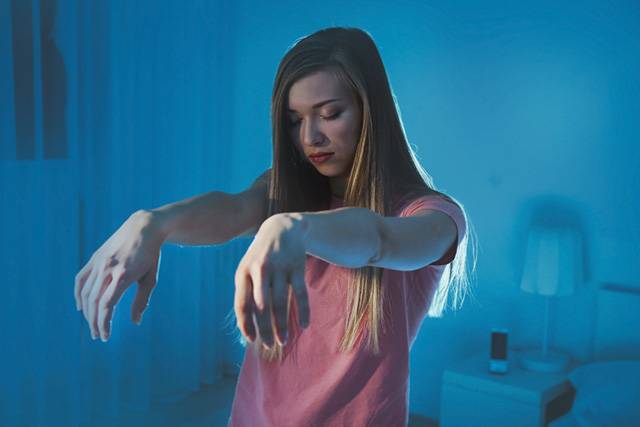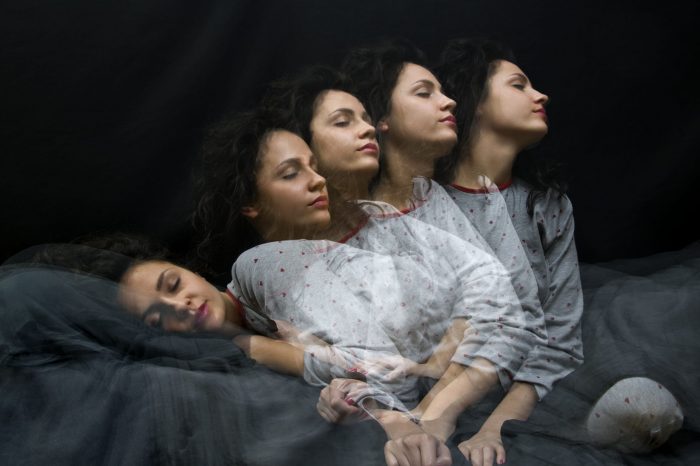For a number of children and adults, sleepwalking is a behavioral disorder that arises during deep sleep and results in walking or performing other complex behaviors, and it is more common in children. Sleepwalking can cause accidents and injuries.

Sleepwalking is a type of sleep disorder known as parasomnia. Parasomnias is an abnormal sleep behavior, which is a separating point between sleep and wakefulness.
Sleepwalking often occurs in the third stage of the sleep cycle, also known as deep sleep, along with other types of parasomnia such as sleep speech and sleep terrors.
What are the symptoms of sleepwalking?
Sleepwalking symptoms can include different types of simple or complex procedures and the eyes may remain open and glassy with a blank look on his face. It is important to realize that despite the name, sleepwalking is not limited to walking. The person can perform some other functions such as getting dressed, moving furniture, or urinating in inappropriate places. Often times, the behaviors can be violent or they can be more complex, including trying to drive a car.
Sleepwalking episodes can last from a few seconds to half an hour, and most of them end in less than 1 0 minutes. The person may go back to bed and fall asleep on their own, or they may wake up confused while still out of bed.
As mentioned above, sleepwalking occurs more among children than adults. In fact, sleepwalking people do not remember anything and it is difficult to determine precisely how often.
What are the risks of sleepwalking?
There can be dangerous health consequences of sleepwalking. Injury can occur if a person tripped and fell or bumped into something while walking or running. Poor handling of sharp objects or trying to drive a car during an attack can be life threatening. Violent behavior can cause harm to sleepwalkers or to others, adding to embarrassment.
Studies have found that sleepwalking people have higher levels of excessive daytime sleepiness and symptoms of insomnia. It is not known whether these problems arise due to actual disturbances from sleepwalking or if there is an underlying factor affecting their sleep that puts them at risk of sleepwalking and daytime sleepiness.




![The Top & Most Popular Seafood Bucket Restaurants in Dubai for you [Never Miss]](https://uae24x7.com/wp-content/uploads/2020/09/8-seafood-in-a-bucket-scaled-e1600739237403.jpg)
![Procedures for Renewing the Driving License in Abu Dhabi [3 Simple Steps]](https://uae24x7.com/wp-content/uploads/2020/07/Capture-9-e1595666454466.jpg)





